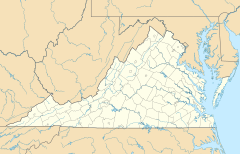
Solitary confinement is a form of imprisonment in which an incarcerated person lives in a single cell with little or no contact with other people. It is a punitive tool used within the prison system to discipline or separate incarcerated individuals who are considered to be security risks to other incarcerated individuals or prison staff, as well as those who violate facility rules or are deemed disruptive. However, it can also be used as protective custody for incarcerated individuals whose safety is threatened by other prisoners. This is employed to separate them from the general prison population and prevent injury or death.
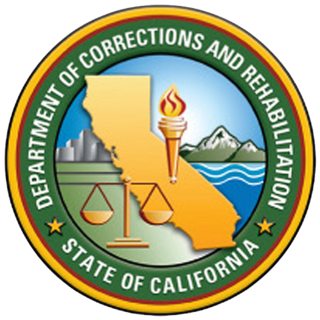
Pelican Bay State Prison (PBSP) is a supermax prison facility in Crescent City, California. The 275-acre (111 ha) prison takes its name from a shallow bay on the Pacific coast, about 2 mi (3.2 km) to the west.

The United States Penitentiary, Administrative Maximum Facility, commonly known as ADX Florence or the Florence Supermax, is an American federal prison in Fremont County to the south of Florence, Colorado, operated by the Federal Bureau of Prisons, a division of the United States Department of Justice. ADX Florence, constructed in 1994 and opened one year later, is classed as a supermax or "control unit" prison, that provides a higher, more controlled level of custody than a regular maximum security prison. ADX Florence forms part of the Federal Correctional Complex, Florence, which is situated on 49 acres of land and houses different facilities with varying degrees of security, including the adjacent United States Penitentiary, Florence High.

A super-maximum security (supermax) or administrative maximum (ADX) prison is a "control-unit" prison, or a unit within prisons, which represents the most secure level of custody in the prison systems of certain countries.

Oregon State Penitentiary (OSP), also known as Oregon State Prison, is a maximum security prison in the northwest United States in Salem, Oregon. Originally opened in Portland 173 years ago in 1851, it relocated to Salem fifteen years later. The 2,242-capacity prison is the oldest in the state; the all-male facility is operated by the Oregon Department of Corrections (ODOC). OSP contains an intensive management wing, which is being transformed into a psychiatric facility for mentally ill prisoners throughout Oregon.
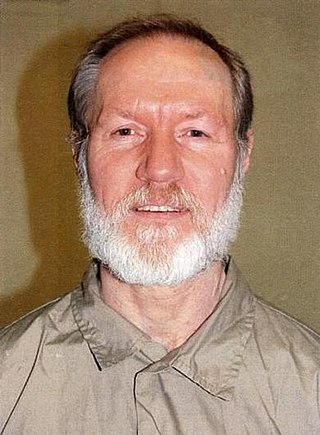
Thomas Edward Silverstein was an American criminal who spent the last 42 years of his life in prison after being convicted of four separate murders while imprisoned for armed robbery, one of which was overturned. Silverstein spent the last 36 years of his life in solitary confinement for killing corrections officer Merle Clutts at the Marion Penitentiary in Illinois. Prison authorities described him as a brutal killer and a former leader of the Aryan Brotherhood prison gang. Silverstein maintained that the dehumanizing conditions inside the prison system contributed to the three murders he committed. He was held "in a specially designed cell" in what is called "Range 13" at ADX Florence federal penitentiary in Colorado. He was the longest-held prisoner in solitary confinement within the Bureau of Prisons at the time of his death. Correctional officers refused to talk to Silverstein out of respect for Clutts.
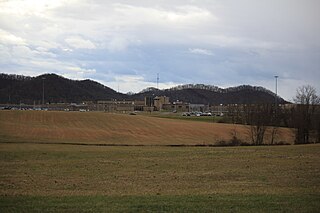
The Southern Ohio Correctional Facility is a maximum security prison located just outside Lucasville in Scioto County, Ohio. The prison was constructed in 1972. As of 2022, the warden is Donald Redwood.
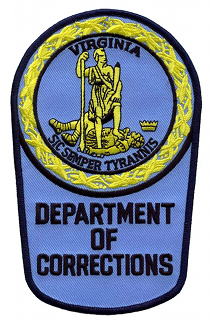
The Virginia Department of Corrections (VADOC) is the government agency responsible for community corrections and operating prisons and correctional facilities in the Commonwealth of Virginia in the United States. The agency is fully accredited by the American Correctional Association and is one of the oldest functioning correctional agencies in the United States. Its headquarters is located in the state capital of Richmond.
Wallens Ridge State Prison is a level 5 state prison located in Big Stone Gap, Virginia, housing approximately 1,200 inmates. Since opening in April 1999, it has been a part of the Virginia Department of Corrections, and is identical to the Red Onion State Prison near Pound. The prison was built for over $70 million. As of 1999 the prison employs almost 800 people.

The State Correctional Institution – Greene is a maximum security prison, classified as a Supermax, located in Franklin Township, Greene County, Pennsylvania, near Waynesburg, off Interstate 79 and Pennsylvania Route 21. Pennsylvania Department of Corrections operates the prison, which houses most of Pennsylvania's capital case inmates.
The Tamms Correctional Center is a closed Illinois Department of Corrections prison located in Tamms, Illinois. Prior to its 2013 closure, the prison housed people in two sections: (1) a 200-bed minimum security facility, opened in 1995, and (2) a 500-bed supermax facility known as the Closed Maximum Security Unit ("CMAX"), opened in 1998, that housed people defined by the prison leadership as most disruptive and dangerous.
The District of Columbia Department of Corrections (DCDC) is a correctional agency responsible for the adult jails and other adult correctional institutions for the District of Columbia, in the United States. DCDC runs the D.C. Jail.
Colorado State Penitentiary is a Level V maximum security prison in the U.S. state of Colorado. The facility is part of the state's East Cañon Complex, together with six other state correctional facilities of various security levels.
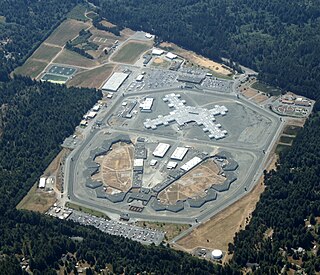
The 2013 California prisoner hunger strike started on July 8, 2013, involving over 29,000 inmates in protest of the state's use of solitary confinement practices and ended on September 5, 2013. The hunger strike was organized by inmates in long term solitary in the Security Housing Unit (SHU) at Pelican Bay State Prison in protest of inmates housed there that were in solitary confinement indefinitely for having ties to gangs. Another hunger strike that added to the movement started the week before in High Desert State Prison. The focus of the High Desert State Prison hunger strike was to demand cleaner facilities, better food and better access to the library.
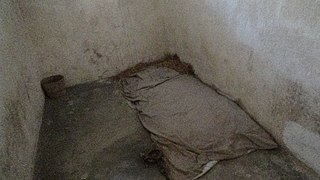
In the United States penal system, upwards of 20 percent of state and federal prison inmates and 18 percent of local jail inmates are kept in solitary confinement or another form of restrictive housing at some point during their imprisonment. Solitary confinement (sometimes euphemistically called protective custody, punitive segregation (PSEG) or room restriction) generally comes in one of two forms: "disciplinary segregation," in which inmates are temporarily placed in solitary confinement as punishment for rule-breaking; and "administrative segregation," in which prisoners deemed to be a risk to the safety of other inmates, prison staff, or to themselves are placed in solitary confinement for extended periods of time, often months or years.
The Indian Creek Correctional Center (ICCC) is a Virginia Department of Corrections (VADOC) state prison for men. The prison is located in Chesapeake, Virginia, United States, approximately 5 miles (8.0 km) north of the North Carolina border.
The Deerfield Correctional Center is a state prison for men located in Capron, Southampton County, Virginia, owned and operated by the Virginia Department of Corrections. The facility was opened in 1994 and has a working capacity of 1,080 prisoners.
The Prisoner Human Rights Movement was launched in 2011 by Pelican Bay State Prison inmates in response to large numbers of inmates being moved from general prison populations to solitary-confinement units after allegations of gang affiliation or political organizing. Its goal is to improve living conditions for inmates in California.
The 2018 U.S. prison strike was a series of work stoppages and hunger strikes in prisons across the United States from August 21 to September 9, 2018. It was one of the largest prison strikes in US history. Striking workers demanded improved living conditions, an end to free prison labor, and other prison reforms. The strike was conducted at least partly in response to the April 2018 prison riot at Lee Correctional Institution, which killed seven inmates and was the deadliest US prison riot of the past 25 years.
Prisoners' Justice Day is a solidarity movement that takes place annually on August 10. The movement began in Canada in 1974 in support of prisoners’ rights and to remember all the people who have died of unnatural deaths while incarcerated. The first Prisoners' Justice Day was held at the Millhaven Institution on August 10, 1975, on the first anniversary of Edward Nalon's death. In addition to a day of mourning, six prisoners took part in an eighteen-day hunger strike. In 1976, August 10 was recognized as a memorial day where prisoners would strike in opposition to the use of solitary confinement and to protest inmate conditions within the Prison System by going on a one-day hunger strike and refusing to work.
